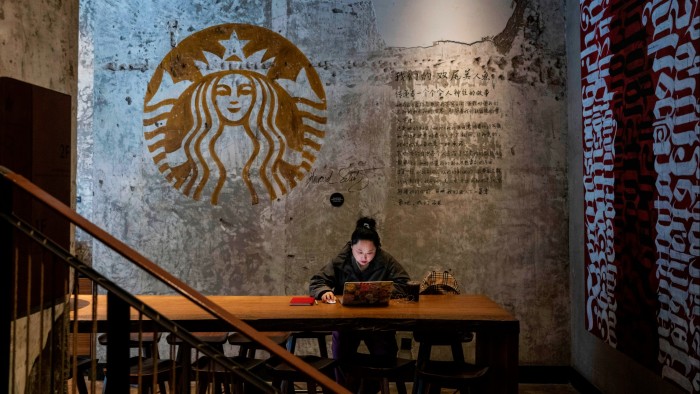Unlock the Editor’s Digest for free
Roula Khalaf, Editor of the FT, selects her favourite stories in this weekly newsletter.
Starbucks shares received the equivalent of a triple shot espresso jolt when the company named Brian Niccol to spearhead a rebound last August. Ten months on, the caffeine buzz is fading amid growing signs that a turnaround of its core US business will take longer and be trickier than initially thought.
Selling a stake in its China business could perk up the coffee giant’s shares again. Niccol told the Financial Times that Starbucks was considering bringing in a minority investor and had received “a lot of interest”.
It would be a step in the right direction. Starbucks’ problems in the US — customer frustration with long wait times, understaffing and tired-looking stores — are execution issues. They are fixable. Since taking the helm in September, Niccol has slimmed down an overly complicated food and beverage menu, hired more baristas to speed up services and fixed up stores.

By contrast, Starbucks’ problems in China — its second-biggest market with 7,758 stores — are more deeply rooted. Local rivals, namely Luckin Coffee, are undercutting it on price and convenience. The slowdown in China’s economy is not helping. Sales from the division, having peaked at $3.7bn in 2021, came in at just $3bn last year. And despite investing heavily to increase its store count, Starbucks has seen its market share in the country fall by half to just 19 per cent in the five years to 2023.

Starbucks already has a high level of penetration in the cities with the highest disposable income. To chase the low-end and mid-end of the market that have powered Luckin’s growth, Starbucks will need to expand in smaller cities. That will be costly.
BTIG analyst Peter Saleh noted last year that Starbucks has invested more than $400mn a year — or between 20 and 25 per cent of the company’s capital spend — to expand in China in recent years. This is capital that Starbucks could be using to fixing up the higher margin US business.
Ultimately, spinning out or selling a majority stake in the China business would make more sense. Either move would free up capital while letting Starbucks keep some exposure to the country. But if that is too radical a departure from its current strategy, selling a minority stake to a partner who has the means and expertise to help fix the China business would be the second-best option.
